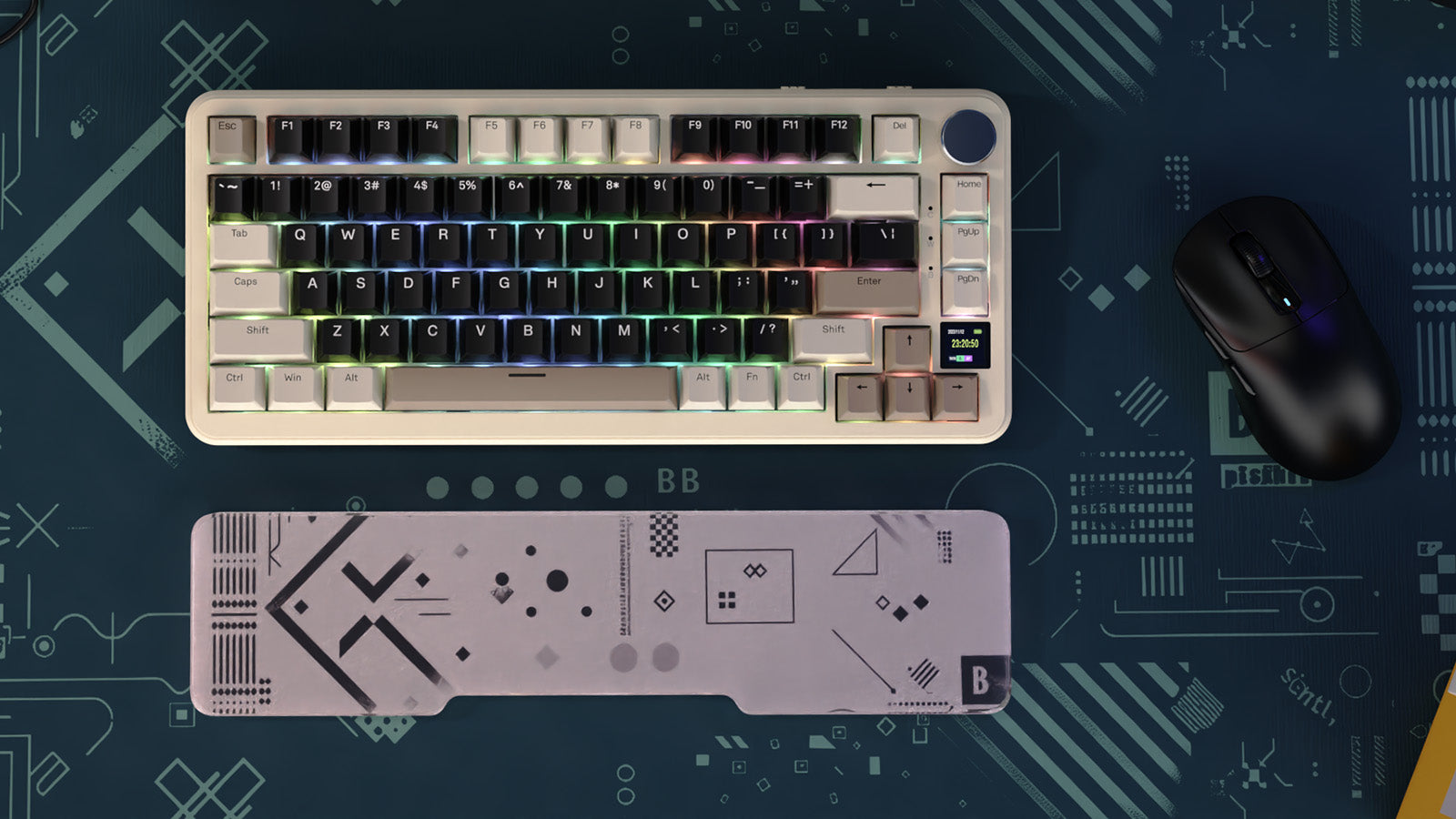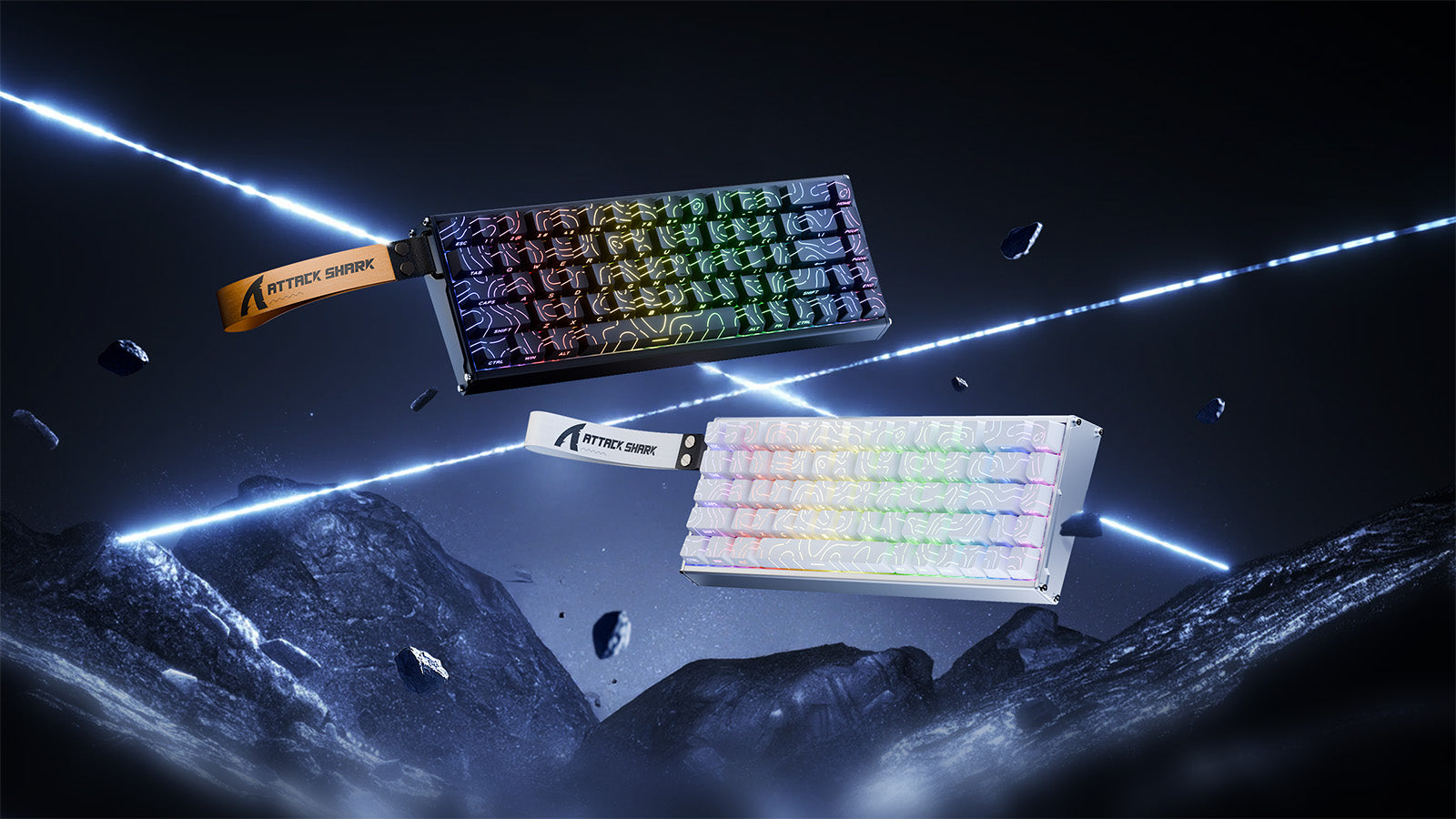So, you want to get into mechanical keyboards. Awesome! The first, and honestly, most critical, choice you'll be making is the switches. The "switch" is the small spring-loaded mechanism under each keycap, and it entirely determines the way a keyboard feels and sounds. Having the correct one can make typing enjoyable and gaming quicker. Linear, Tactile, and Clicky are the three switch families. So let's dissect what that really looks like in the real world so that you can discover your ideal fit.

What Are the Three Main Types of Keyboard Switches?
At the end of the day, the difference between these switches is all about the feedback you get—or don't get—when you press a key.
- Linear switches are smooth from top to bottom. No bumps, no clicks, just a straight, clean press.
- Tactile switches have a small, quiet "bump" you can feel partway through the press, letting you know the key was activated.
- Clicky switches have that same tactile bump, but they also produce a loud, distinct "CLICK" sound at the same point.
While these are the three main categories, a wide array of different keyboard switches exist, each with unique characteristics. Understanding the subtle differences in feel, sound, and ideal use case is what will guide you to the right choice.

What Do Linear Switches Feel and Sound Like?
Consider pressing a key and experiencing but a single, smooth, uninterrupted motion from the instant that your finger strikes it to the instant that it hits bottom. That's a linear switch. There is no bump and no secondary click. The sole sound is the keycap striking the switch housing at the bottom of the press, which is usually a quiet "thock."
Who Are They For?
Linear switches are very popular with gamers, particularly gamers who play quick-paced FPS or action games. The smooth, even press ensures that there is no interference, and you can achieve lightning-quick, repeated keystrokes such as double-tapping or strafing. There is no bump, so your finger can slide in smoothly, which can improve your competitive gaming.
What to Keep in Mind
The sole actual drawback to some is the fact that this lack of feedback makes typing a bit tricky. It's easy to accidentally press a key without it registering, typing even more typos if you're not used to them. They also differ in weight. "Reds" tend to be light and easy to press, but "Blacks" are heavy and require more pressure, which prevents accidental pressing.

What Makes Tactile Switches Different?
Tactile switches are usually the best compromise. As you're depressing the key, you'll notice a slight but highly noticeable "bump" midway through travel. The bump is your tactile indication that the keystroke has been recorded by the computer. You don't have to press the key all the way down; as soon as you feel the bump, you can move on to the next key.
Who Are They For?
This all combines to make tactile switches great, do-everything switches. For typists, the bump gives you feedback that can result in faster, more precise typing with less finger fatigue, as you learn not to "bottom out" each key. For gamers, the bump is generally subtle enough that it won't interfere, while still giving you a more deliberate feel than linears. If you're going to look for a single keyboard to use for both your work emails and gaming, a tactile switch is a great and safe option.
What to Keep in Mind
Here, the important thing is that the bump is one that you feel, rather than hear. Tactile switches are meant to be quiet, so they're suitable for use in an office setting or living areas that you share with other people. The most popular one is the "Brown" switch, which has a smooth, non-disruptive bump.,especially when compared to the red switches.
What's a Clicky Keyboard Switch?
A clicky switch is the loudest and most dramatic of the bunch. It gives you two types of feedback at the exact same time. As you press the key, you feel the same kind of tactile bump as you would on a tactile switch, but you also hear a loud, high-pitched "CLICK" at the exact same moment. This is usually created by a clever two-piece mechanism inside the switch.
Who Are They For?
Clicky switches are beloved by typists who want the most feedback possible. The combination of the feel and the sound makes every keystroke feel incredibly intentional and satisfying, almost like using a classic typewriter. If you love loud, crisp sounds and want to be absolutely sure every single key press has registered, this is the switch for you.
What to Keep in Mind
The noise is the biggest factor here. Clicky switches are not subtle. They are loud enough to be heard across a room and can be very distracting to coworkers, family members, or anyone else on a voice call with you. The classic "Blue" switch is the most well-known example. Before you commit to a clicky keyboard, seriously consider your environment.
How Do I Choose the Right Switch for Me?
The "best" switch is completely subjective, but you can narrow it down by thinking about your priorities.
- Go with Linear if: Your top priority is speed and smoothness for competitive gaming, and you want a quiet keyboard.
- Go with Tactile if: You want a versatile, "do-it-all" switch that's great for both typing and gaming, and you prefer quiet feedback you can feel.
- Go with Clicky if: You primarily type and you love a loud, satisfying, and unmistakable confirmation for every keystroke.
If you're still not sure, the absolute best thing you can do is try them for yourself. If you can find a store with display keyboards, spend a few minutes typing on them. Even better, you can buy an inexpensive "switch tester" online. It's a small plastic board with a handful of different switch types mounted on it, so you can press them side-by-side and directly compare how they feel and sound before you invest in a whole keyboard.
The Bottom Line
Choosing your switch type is all about personal preference for feel and sound. Linears are smooth and fast, tactiles are the balanced and quiet all-rounders, and clicky keyboards are the loud and proud typist's dream. Each one offers a completely different experience. Now that you know what makes them tick, you can confidently pick the one that will make your time at your desk feel just right.






Leave a comment
This site is protected by hCaptcha and the hCaptcha Privacy Policy and Terms of Service apply.